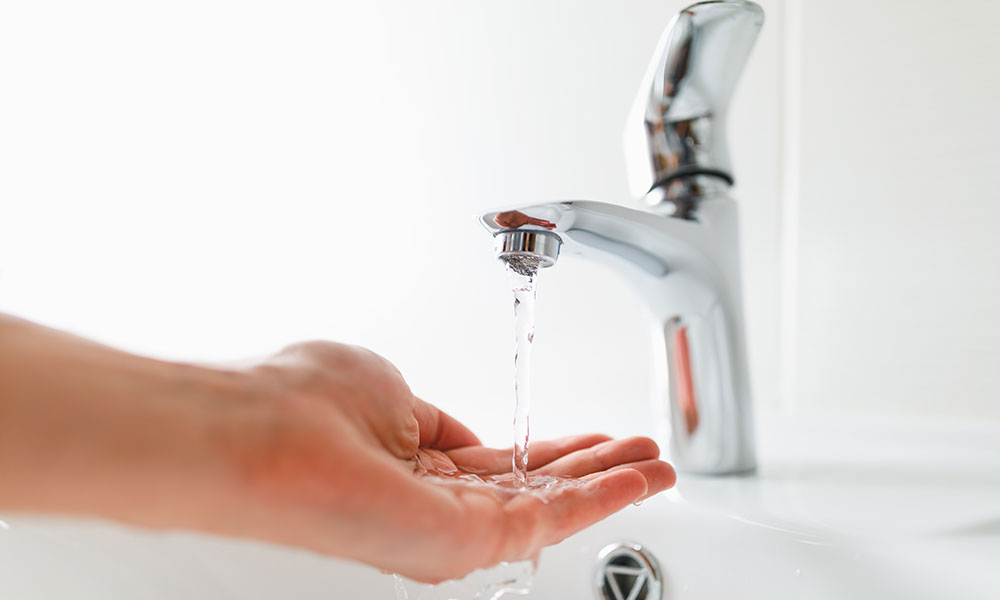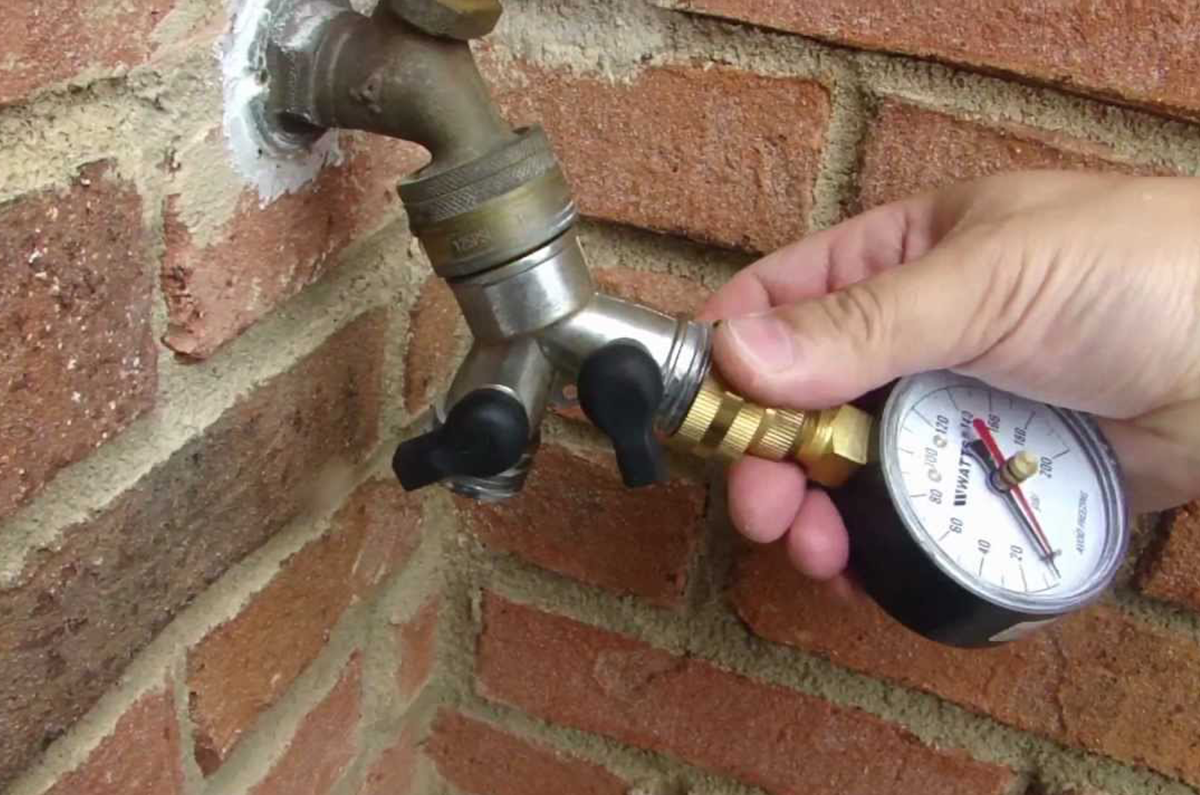An Definitive Manual to Resolving Low Water Pressure in Your Home
An Definitive Manual to Resolving Low Water Pressure in Your Home
Blog Article
The author is making several great points related to 10 Reasons for Low Water Pressure in Your House in general in the content down below.

Low water pressure in your house can be an aggravating issue, influencing every little thing from bathing to cleaning recipes. If you're experiencing weak water flow, there are several feasible causes and services to discover. In this overview, we'll talk about usual factors for low tide stress and practical actions to deal with the concern effectively.
Introduction to Low Tide Stress
Low water stress takes place when the circulation of water from your taps, showers, and various other fixtures is weaker than typical. This can make everyday jobs more challenging and much less reliable. Understanding the sources of low water pressure is important to discovering the best solution.
Common Causes of Low Tide Pressure
Pipe Obstructions
Gradually, pipes can come to be clogged with mineral deposits, sediment, or debris, restricting the flow of water. This is a typical concern in older homes with galvanized steel pipes.
Rust
Deterioration within pipelines can bring about leaks and lowered water stress. Corrosion accumulation can tighten water circulation, particularly in aging plumbing systems.
Faulty Pressure Regulatory Authorities
Stress regulators are accountable for keeping regular water stress in your house. If they malfunction, it can lead to low water stress or uneven flow throughout your house.
Local Water Supply Issues
Occasionally, the problem exists outside your home. Metropolitan supply of water problems, such as main line leakages or maintenance work, can momentarily minimize water stress in your location.
Exactly How to Diagnose Low Water Stress
Checking Faucets and Fixtures
Begin by checking the water pressure at various taps and components throughout your home. If the issue is isolated to certain locations, it may suggest local issues.
Examining Pipes
Evaluate noticeable pipes for indications of leakages, corrosion, or clogs. Pay attention to any unusual sounds, such as knocking or rattling pipelines, which can indicate concerns within the plumbing system.
Consulting with a Plumber
If you're unable to identify the reason for low water pressure, think about working with a professional plumber to carry out a detailed evaluation. They can identify underlying issues and suggest suitable solutions.
DIY Solutions to Fix Low Water Stress
Cleaning Up Aerators and Showerheads
Mineral deposits can accumulate in aerators and showerheads, reducing water circulation. Eliminate and clean these components on a regular basis to boost water pressure.
Flushing Water Heater
Debris buildup in the hot water heater can limit circulation and minimize efficiency. Flushing the tank occasionally helps remove sediment and maintain optimal performance.
Checking Pressure Regulatory Authority
Ensure that the pressure regulatory authority is operating correctly. Changing or replacing the regulatory authority can aid recover appropriate water pressure throughout your home.
Cleaning Clogs in Pipes
For small obstructions, try making use of a plumbing serpent or chemical drain cleaner to clear blockages in pipelines. Beware when utilizing chemicals and follow safety standards.
When to Call a Professional Plumber
If DIY efforts fall short to fix the concern or if you think significant plumbing problems, it's best to seek help from a certified plumber. They have the expertise and devices to address complex concerns securely and effectively.
Preventive Measures to Maintain Water Pressure
Routine Maintenance
Set up regular maintenance for your plumbing system to avoid problems such as corrosion, leaks, and clogs. Resolving small problems early can aid stay clear of even more substantial repairs later.
Setting Up a Stress Booster
Take into consideration setting up a pressure booster pump to boost water pressure in areas with continually reduced circulation. This can be specifically valuable for multi-story homes or buildings with high-demand fixtures.
Tracking Water Use
Be mindful of water usage behaviors and stay clear of overtaxing the plumbing system. Basic adjustments, such as incredible showers and laundry loads, can help preserve ample water pressure.
Conclusion
Managing low water pressure can be frustrating, however identifying the underlying reasons and carrying out ideal services can bring back optimal circulation throughout your home. Whether it's cleaning up aerators, examining pipes, or talking to a plumber, taking aggressive steps can make certain a steady supply of water for your daily demands.
FOUR WAYS TO FIX LOW WATER PRESSURE NOW
Turning on a shower or faucet only to find the water comes out in a sad, slow drizzle is never a good feeling. How exactly are you supposed to wash a pan or take a quick shower when it takes 10 minutes just to rinse off a little soap? The good news is that when your water pressure is bad, there's always a cause: typically one that can be easily fixed. Here are some of the most common causes of low pressure and what you can do to fix the issue:
DEBRIS AND MINERAL DEPOSIT BUILDUPS
If you notice low water pressure from just one or two of the fixtures in your house, the problem likely has to do with debris buildup. Water is full of minerals and other debris, all of which can accumulate in your pipes and on your fixtures. This can cause a blockage that affects how much water flows through. To fix this, try filling a small plastic bag with white vinegar, and use a rubber band to hang it around your showerhead or faucet. Let the head of the fixture soak for a few hours, and the vinegar should loosen the deposits.
WATER LEAKS
Leaks are another common cause of low water pressure. If water is flowing out of your plumbing through a hole or crack before it can reach your fixture, the pressure coming out of the faucet or showerhead will be lower. A plumbing professional is your best bet for finding and repairing a leak in your water supply pipes.
Leaks are another common cause of low water pressure. If water is flowing out of your plumbing through a hole or crack before it can reach your fixture, the pressure coming out of the faucet or showerhead will be lower. A plumbing professional is your best bet for finding and repairing a leak in your water supply pipes.
FOUR WAYS TO FIX LOW WATER PRESSURE NOW
Turning on a shower or faucet only to find the water comes out in a sad, slow drizzle is never a good feeling. How exactly are you supposed to wash a pan or take a quick shower when it takes 10 minutes just to rinse off a little soap? The good news is that when your water pressure is bad, there's always a cause: typically one that can be easily fixed. Here are some of the most common causes of low pressure and what you can do to fix the issue:
DEBRIS AND MINERAL DEPOSIT BUILDUPS
If you notice low water pressure from just one or two of the fixtures in your house, the problem likely has to do with debris buildup. Water is full of minerals and other debris, all of which can accumulate in your pipes and on your fixtures. This can cause a blockage that affects how much water flows through. To fix this, try filling a small plastic bag with white vinegar, and use a rubber band to hang it around your showerhead or faucet. Let the head of the fixture soak for a few hours, and the vinegar should loosen the deposits.
WATER LEAKS
Leaks are another common cause of low water pressure. If water is flowing out of your plumbing through a hole or crack before it can reach your fixture, the pressure coming out of the faucet or showerhead will be lower. A plumbing professional is your best bet for finding and repairing a leak in your water supply pipes.
Leaks are another common cause of low water pressure. If water is flowing out of your plumbing through a hole or crack before it can reach your fixture, the pressure coming out of the faucet or showerhead will be lower. A plumbing professional is your best bet for finding and repairing a leak in your water supply pipes.
A VALVE ISSUE
If you have low water pressure throughout your home, check your main shut-off valve to make sure it's completely open. You may also want to see if there's a pressure-reducing valve installed. If there is, have a plumber help you adjust the settings to get the pressure you're looking for.
OTHERS USING WATER
Believe it or not, your low water pressure could be caused by your neighbors. If you notice low pressure at certain times of day, it may be because you and the people living next to you have similar schedules - when everyone is showering at the same time, the pressure will be lower in every home. Low pressure throughout the neighborhood may also be caused by an issue with your municipal water supply. If that's the case, call the supplier to see if they're working on the issue.
https://www.rotorooter.com/blog/water-leaking/low-water-pressure-fixes/

As a keen person who reads about 9 Reasons for Low Water Pressure in Your House, I think sharing that excerpt was a good thing. Loved our blog posting? Please share it. Let another person discover it. I truly appreciate reading our article about Low Water Pressure in the House?.
Rates Report this page